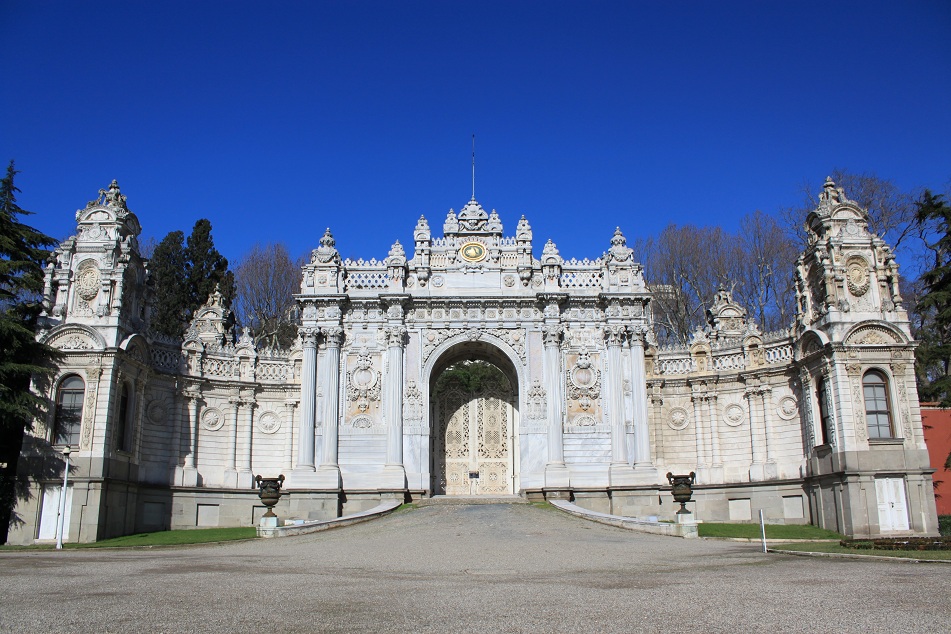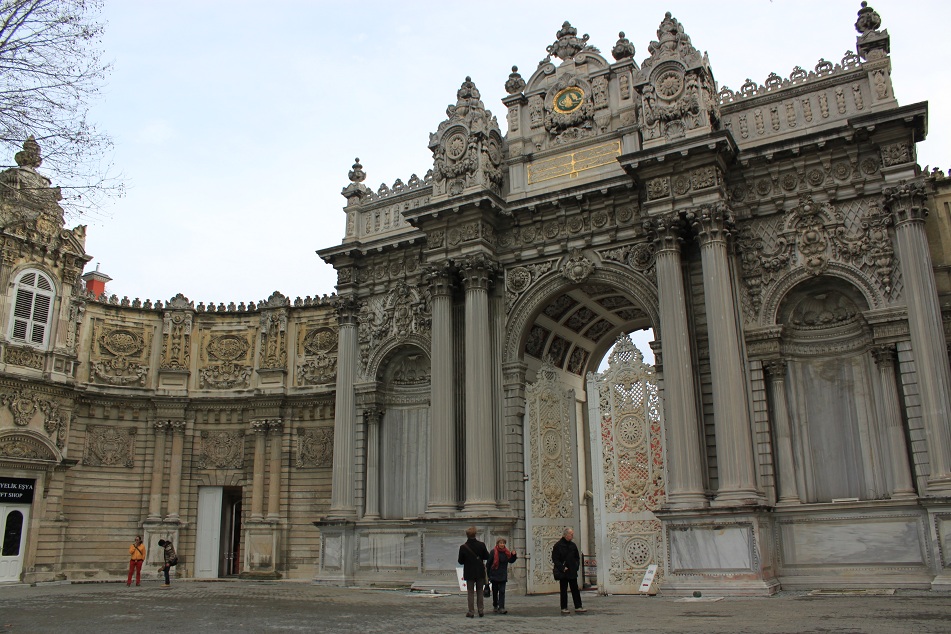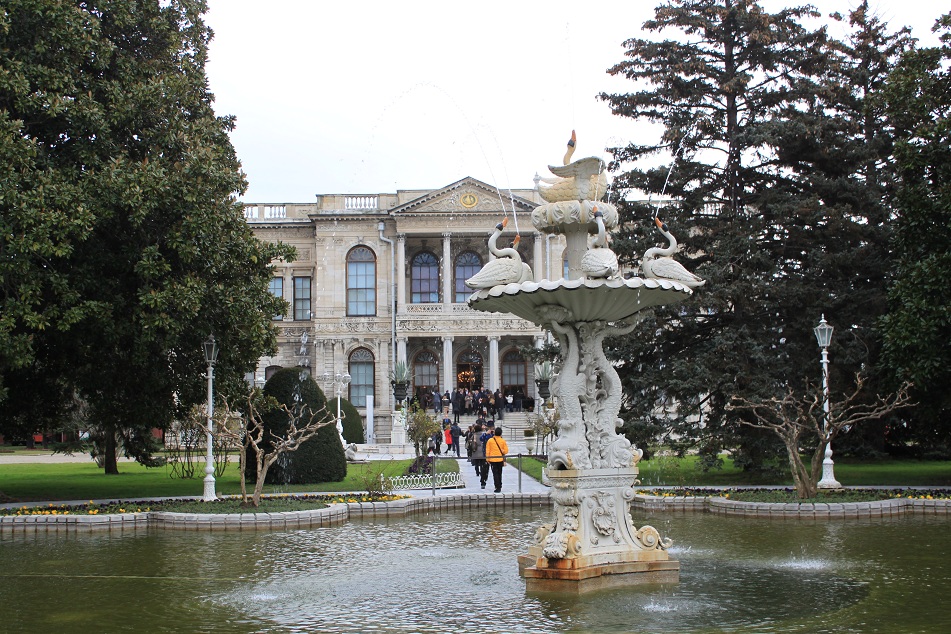The steep cobblestone street that raises up on the right side of the expansive Gülhane Park is filled with stone artifacts from the Byzantine era, all lined up on one side of the street creating an outdoor exhibition of the fragments from the city’s long history. Turning right on a corner, the Archaeological Museum sits on the left side – home for the city’s most important archaeological heritage. Walking further uphill, an open space sweeping with rows of leafless white trees leading onto two grey medieval towers welcomes me.
Topped by dark grey cones and flanked by thick brick walls, the Gate of Salutation which serves as the entrance to the second courtyard of the Topkapı Palace brings images from medieval castles and palaces across Europe to my mind. Walking closer to the gate, a large green emblem engraved with Arabic calligraphy reminds me of the once powerful empire that ruled vast regions from 1299 to 1923 – the Ottoman Empire – which made this palace its center of power for 400 years.
Walking northeast deeper into the palace complex, blocs of buildings and pavilions are scattered throughout the second to the fourth courtyards, each of them embodies the splendor of Ottoman architecture. The construction of this palace began in the mid-15th century and the palace underwent series of expansions over the next few centuries. Unlike other palaces in Europe that follow symmetrical master plans, the expansion of the Topkapı Palace under different reigns of sultans resulted in asymmetrical layout of the palace, following the taste of each sultan.
Being the last major Muslim empire in history, the Ottoman Empire hosted the most sacred relics in the Muslim world. The cloak of Muhammad, the swords of the first four caliphs, the staff of Moses, and the turban of Joseph are some of the most treasured relics stored in the Privy Chamber, currently under the auspices of the secular republic.
Walking further to the fourth courtyard, a more private sanctuary composed of several pavilions and kiosks overlooks the Bosphorus. Baghdad and Yerevan kiosks which were built after the Ottomans’ victories during the campaigns to both cities are some of the beautifully embellished kiosks in the fourth courtyard. Still in the same area, the ornately decorated Circumcision Room was built to hold the mandatory rite of passage for young princes.
However, even though Topkapı Palace was large enough to host up to 4,000 people, the 31st sultan of the Ottoman Empire – Abdülmecid I – thought that the empire needed a new and European-looking palace to replace the centuries old Topkapı Palace.
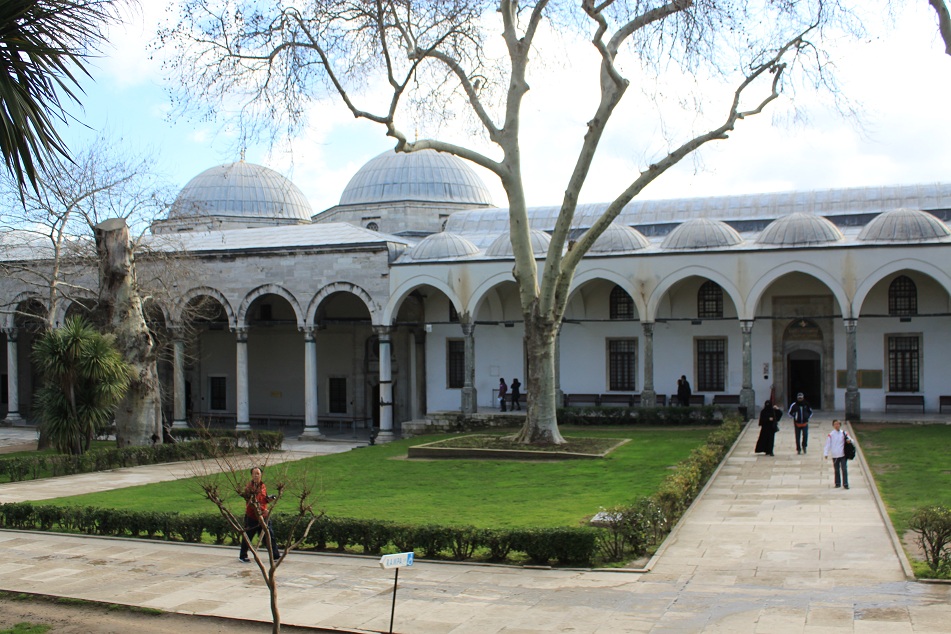
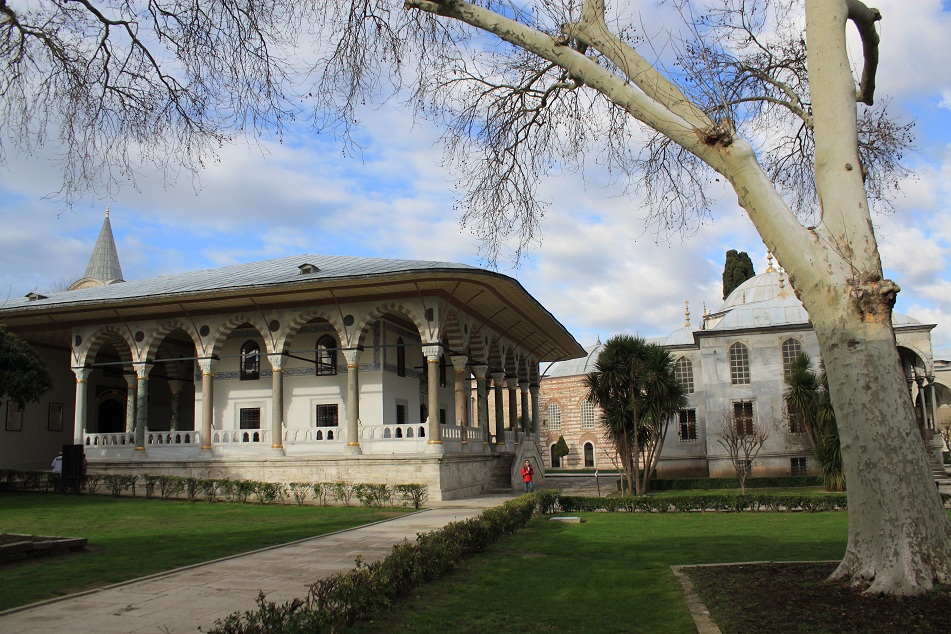
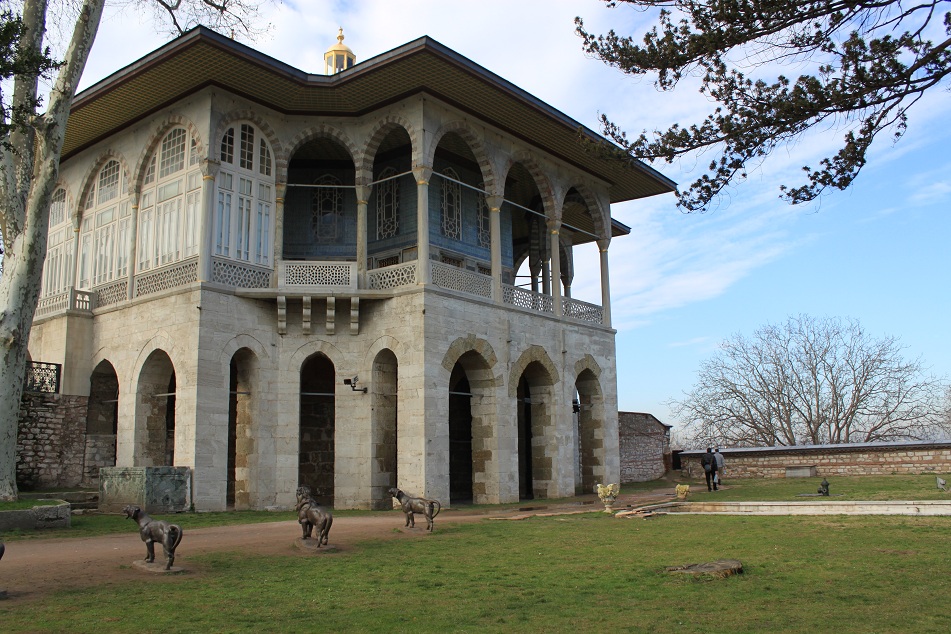
Despite the decline of the empire in the 19th century, Sultan Abdülmecid I ordered the construction of a new palace along the Bosphorus to replace the Topkapı Palace as the house of the sultan as well as the main administrative seat of the empire. Influenced by the spirit of Tanzimât to reform the declining empire by incorporating new ideas and thoughts, the newly built palace is heavily inspired by Baroque, Rococo and Neoclassical styles without losing some Ottoman features. In 1856 the Dolmabahçe Palace started to be fully functional as the seat of government of the sick man of Europe.
Adorned with the Hereke carpets, Baccarat and Bohemian crystals, also Sèvres and Yıldız porcelains to name some, the entire palace is an unusual concoction of various architectural features and furniture. Apart from the many rooms and halls which normally make up a palace, Dolmabahçe also has six hamams – an essential feature of an Ottoman palace. On top of everything, there is the Grand Ceremonial Hall which some consider as even more majestic than most European palaces’ royal halls. The world’s largest crystal chandelier which weighs 4.5 tonnes is hung from the ceiling under the dome which was painted in three-dimensional technique, creating optical illusion which makes the ceiling appear taller than it actually is. Adored by many yet detested by some, I find its hard to belie the grandeur of this palace.
After the establishment of the new secular republic by abolishing the caliphate altogether, Mustafa Kemal Atatürk – the father of all Turks – moved the capital from Istanbul to Ankara, a city located right at the heart of Anatolia. However when his health deteriorated, he spent the rest of his days in a more secluded and peaceful room of Dolmabahçe. On November 10, 1938, the founding father of the republic passed away in a bedroom in the Harem section of the palace. The bed is now covered in the Turkish flag and the clock in the room is set to 9:05, the time when Atatürk died.
No new palace has been built ever since, sparing the ailing country’s reserve from improper spending. But more than eight decades later, Turkey is no longer the sick man of Europe, leaving the title reluctantly claimed by its western neighbor.
